Affiliate links on Android Authority may earn us a commission. Learn more.
I am a traditional cyclist who just got an e-bike, and here's what I think
Published onNovember 27, 2022
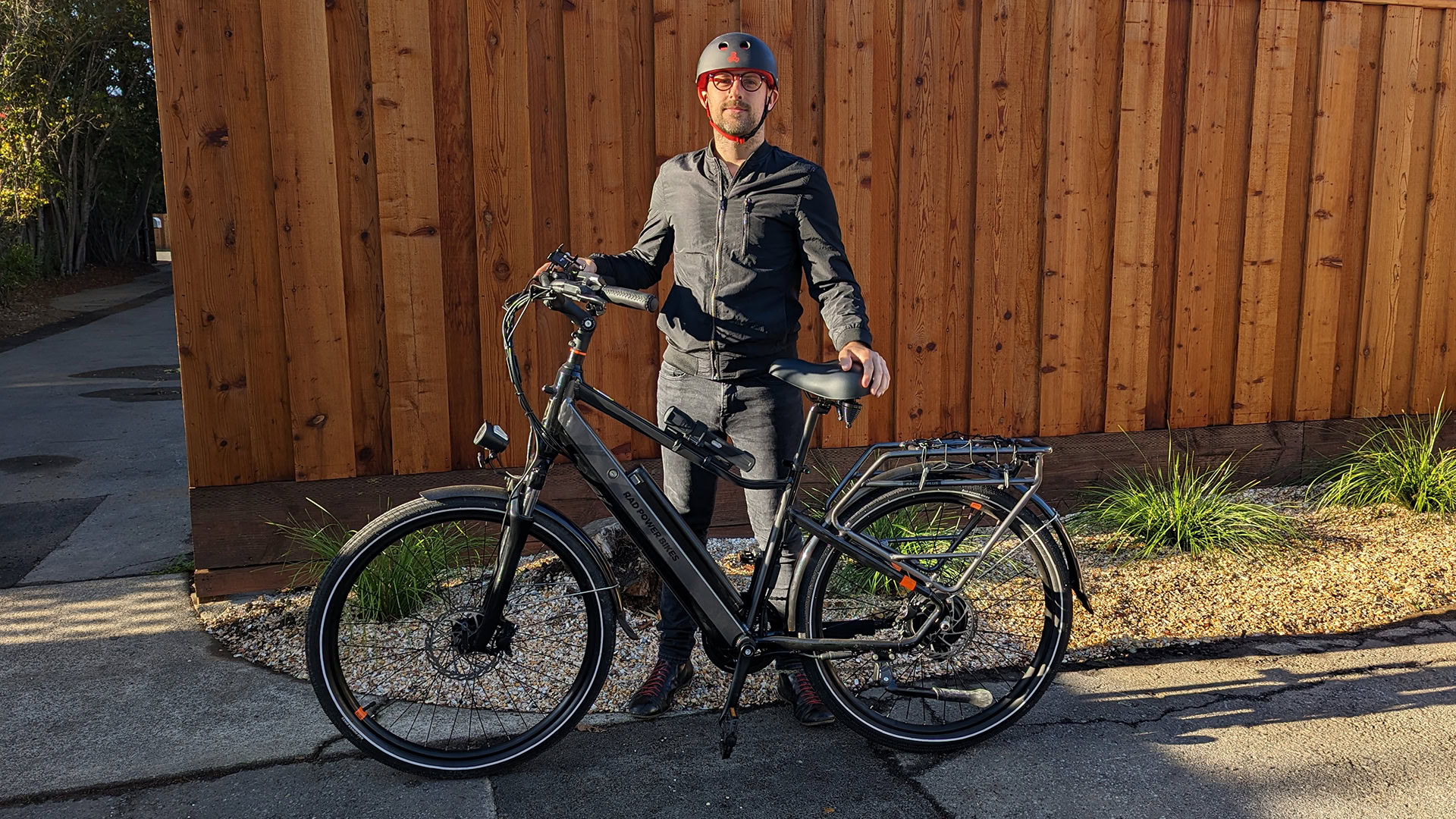
E-bikes have come a long way. Over the past 30 years, the use of electric bikes has surged overseas, especially in China, where hundreds of millions of e-bikes are used daily. Here in the United States, though, the rise of e-bikes has been relatively slow. In 2021, the United States only saw fewer than 500,000 e-bikes sold, for example. As such, millions of Americans right now could be looking to buy an e-bike for the first time. I counted myself among them.
As a guy who’s used a bicycle as his primary mode of transportation for the better part of the last decade, I’ve always been interested in e-bikes — but also kind of scoffed at them. Honestly, using one seemed like “cheating” to me. Why would you need some electric motor to help you get around? Use your legs; that’s what they’re there for!
That was a fine stance when I lived on the relatively flat East Coast shoreline. However, I recently moved to the Bay Area in California. This notoriously hilly spot in the US seems daunting for traditional cycling. Sure, I could pedal my way to the grocery store, but by the time I got there, how much of me would be left that I hadn’t sweated out under the hot California sun?
So, for the first time, I decided to give an e-bike a try. Can an electric bike replace my need for a regular bike? Is riding an e-bike safe, practical, and, most of all, fun? There was only one way to find out, so I abandoned my regular bikes and went all-in on an e-bike for two weeks.
Green Authority: The best electric bicycles
Choosing an e-bike
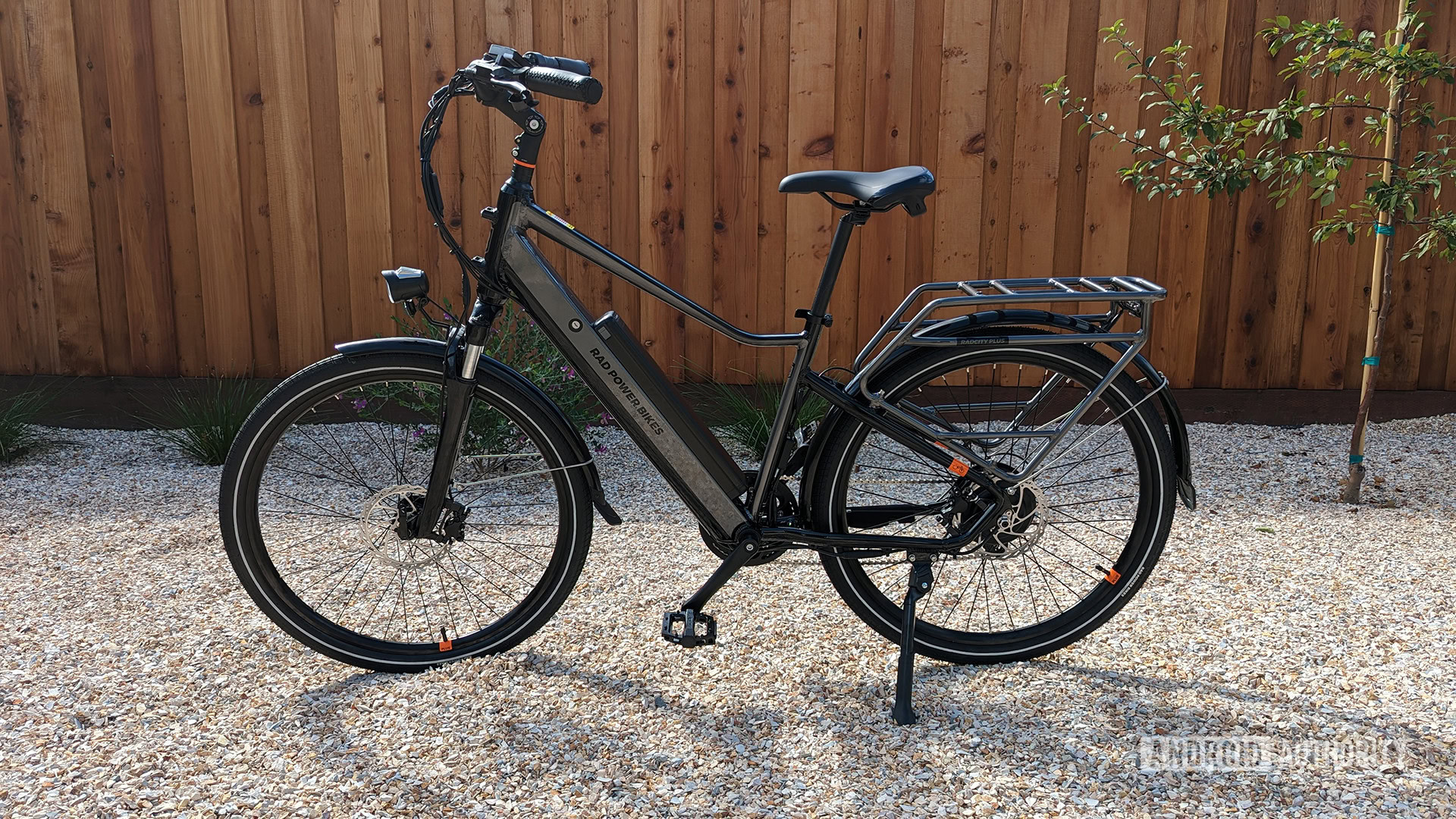
I decided to go with a Rad Power e-bike based on suggestions from other cyclists I know. The company also has a brick-and-mortar shop a short distance from my home, so that sealed the deal. I went to the shop and took several models for test rides, a process that Rad Power makes very easy for anyone. If you live near a Rad Power shop, just walk on in, sign a waiver, and ride around on every available model.
My first test ride was the Rad Mission High-Step (which Rad Power has since discontinued). I chose it because, of all the e-bikes at the shop, it looked the most like a “normal” bike. It also was the least expensive, a huge consideration for those looking to buy a new e-bike.
At first, I was looking at bikes that looked and worked like 'regular' bikes.
My ride with the Rad Mission was great. However, it didn’t operate much like a traditional bicycle since it is a lot heavier. With the battery installed, it weighs 55 pounds, a stark contrast with the 30-pound fixed-gear bike I am used to. As such, getting it moving from a dead stop through pedal power alone took twice as much energy — or twice as much time. Obviously, this is where the “e” in “e-bike” comes in handy. We’ll talk more about this later.
Happy enough with the Rad Mission, I gave the Rad City 5 Plus a spin. Unlike the Rad Mission, the Rad City 5 Plus looks like what most people think about when they think “e-bike.” It has a huge frame, thick tires, and a cruiser-style shape that appeals more to commuters than serious cyclists.
Honestly, though, the Rad City 5 Plus was an immeasurably better experience when compared to the Rad Mission. It was a more stable ride with faster speeds, more comfortable thanks to its mountain bike-esque suspension, had a ton of included accessories (like the cargo rack), and was more customizable to one’s riding style.
I quickly realized that choosing an e-bike means abandoning your preconceived notions about non-electric bikes.
The problem, though, was that riding the Rad City 5 Plus was nothing like riding a regular bike. It’s even heavier than the Rad Mission at a whopping 72 pounds with the battery installed, making it difficult to move with just pedal power. Going downhill, turning, and even getting on/off is more like operating a moped or even a motorcycle.
This presented me with a conundrum. Do I go with something like the Rad Mission that operates as closely as possible to a traditional bike, or do I abandon that whole concept and go with something like the Rad City 5 Plus, which felt better even though it was further away from what I’m used to?
Eventually, after test-riding a bunch of other models, I decided on the Rad City 5 Plus. I figured if I’m going to commit to an e-bike, I need to abandon my attachment to a traditional cycling experience.
Putting together an e-bike
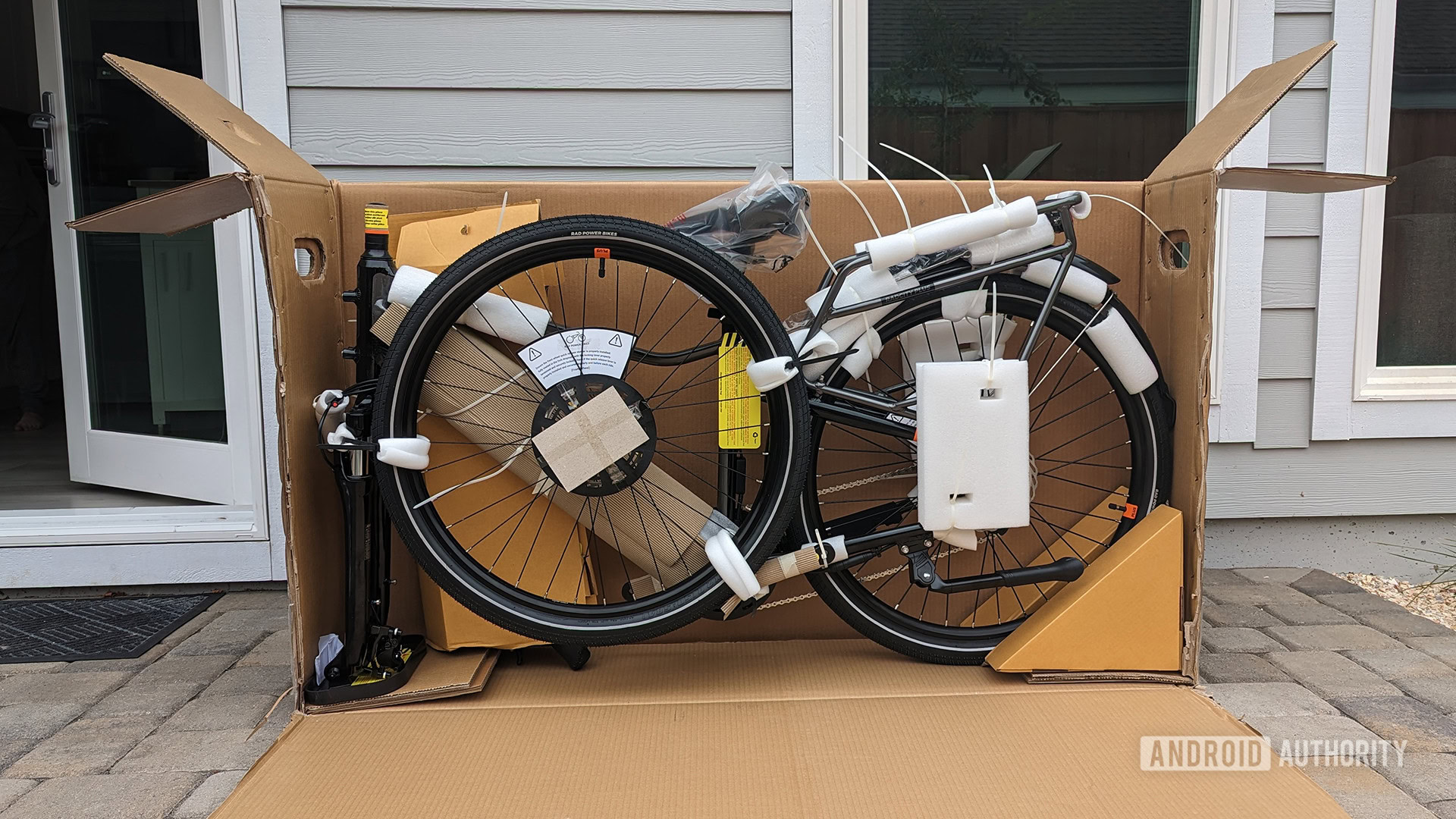
If you’ve purchased a regular bicycle online before, you know that it comes with some assembly required. An e-bike will be no different and will be even more complicated thanks to all the cabling, battery, and extra gear.
Rad Power sent the Rad City 5 Plus in a standard bicycle box. It came with some tools, a bunch of hardware bits, a charger, and a very thick user guide. The bike itself was mostly assembled, but the front wheel wasn’t connected, and lots of things needed to be adjusted before it would be ready to ride.
See also: I rode an electric bike to work, and here’s what I learned
Thankfully, Rad Power has a very helpful setup video to guide folks along. I didn’t even use the manual; the video alone worked for me. It took me about 90 minutes to go from opening the box to taking it for a test ride. Granted, I’ve done this before with a few regular bikes, so it was all pretty familiar outside of the electronics.
If you live near a Rad Power showroom, you can skip this entirely by buying a pre-assembled e-bike. You can also take a Rad Power bike still in its box to a local bike repair shop and pay to have it assembled for you. However, putting it together yourself can be advantageous because it helps you understand what does what, which might help for future repairs and troubleshooting.
Riding an e-bike
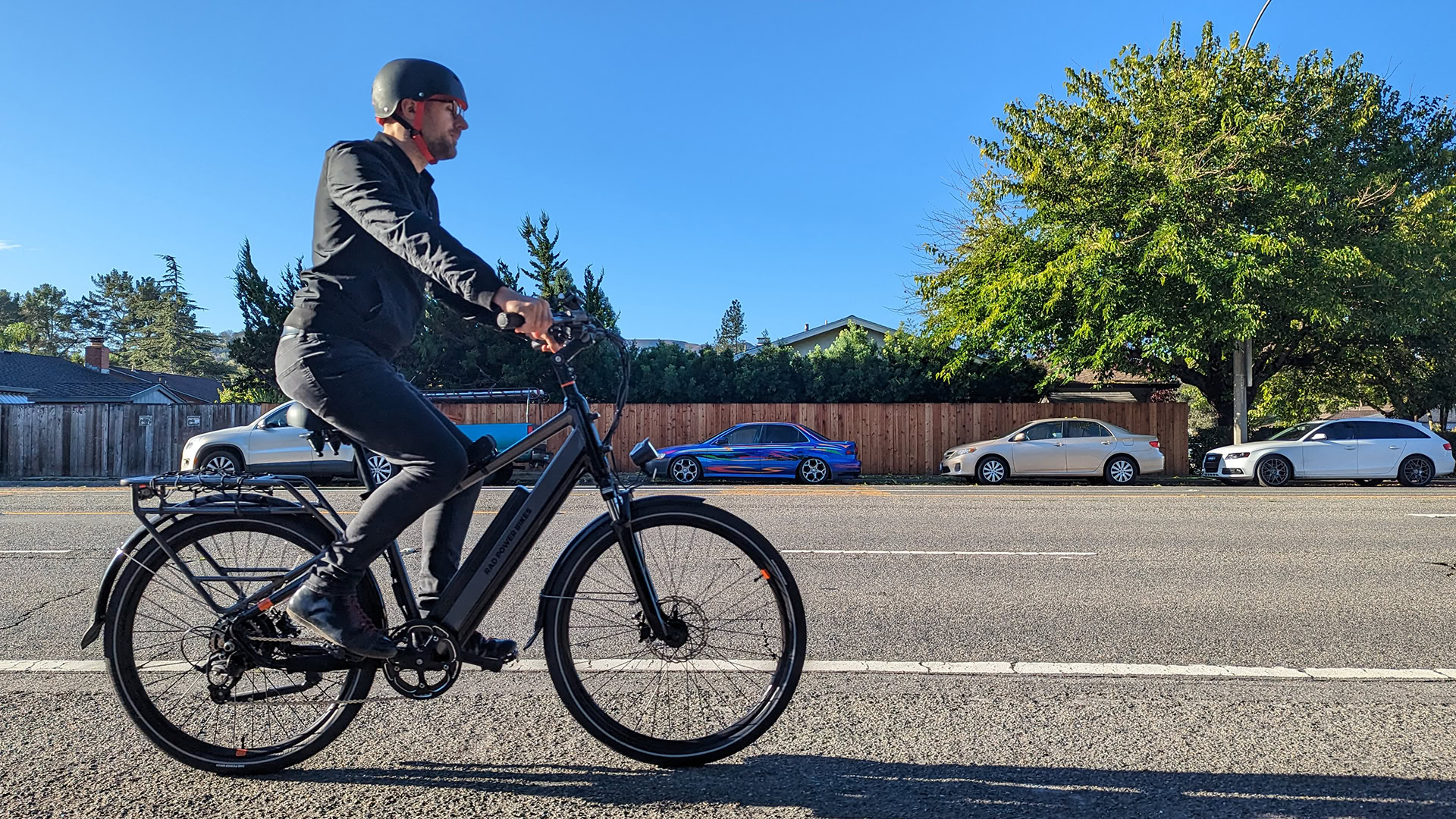
Generally, there are two types of electric propulsion on an e-bike. The first is a pedal assist system (PAS), which sometimes has different names (“pedelec” being one of them). Essentially, this is when the battery-powered motor assists your normal pedaling. You can tune how much help you get to allow you to find the right balance between human-powered propulsion and using up your e-bike’s battery.
The second type of propulsion is known as power-on-demand. This is the kind of propulsion you think of when it comes to motorcycles: you turn the throttle a certain amount and off you go, no pedaling necessary.
There are two types of propulsion on an e-bike: a pedal assist system (PAS) and power-on-demand.
If you buy an e-bike in the United States, chances are it will come with a PAS, but it may or may not have the option for power-on-demand. This comes down to local regulations on how e-bikes are classified. After all, if your e-bike has a throttle that pushes you from zero to 20mph in a few seconds, should that still be classified as a bicycle? If it gets classified as a moped or motorcycle instead, that means you might need a specific license to operate it, which creates a huge entry barrier for consumers. In other words, you’ll need to shop around and figure out what you can ride in your area without jumping through too many hoops.
Related reading: Everything you need to know about electric scooters
The Rad City 5 Plus has both a PAS and power-on-demand. You control the PAS using the leftmost pad on the handlebar. I found that, for riding on a flat road, leaving the PAS at “1” was fine enough for me, and I’d completely turn it off any time I was going downhill. If I hit any type of incline, however, I’d need to bump the PAS to “2” or even “3,” depending on how steep of a road I was facing.
The PAS goes all the way up to “5,” but I never set it that high. For me, if I wanted that much power, I’d just use the throttle. The throttle is next to the right handlebar grip and if you turn it as far as it goes, the bike speeds forward at a remarkably fast pace. This became essential for the many intersections I hit riding around my town. Since the e-bike is so heavy, getting through an intersection from a full stop feels like it takes forever without using the throttle. It made me feel self-conscious, like all the people in their cars waiting for me to plod through were groaning and thinking, “Damn cyclists.”
Using power-on-demand to quickly rev up from a full stop became an essential way to get through intersections.
The throttle solves this problem. From a dead stop, a pull of the throttle zooms me through an intersection without any grumbling motorists. It also gets some momentum going so I can knock down the PAS to “1” and cruise comfortably while still putting in plenty of pedal power.
As a traditional cyclist, zooming with power-on-demand is both fun and disorienting. Traditional bicycles do not zoom from a full stop to 20mph in a few seconds, no matter how great a cyclist you might be. It feels wholly different but also useful and, I’ll admit, safer. Knowing I can pull on the throttle and plow my way through something creates an extra layer of control over my situation. If a car is pulling some shenanigans (running a red light, doing a “rolling stop,” etc.), a traditional cyclist can only stop in reaction. With the Rad Power Rad City 5 Plus, I can use the hydraulic disc brakes to come to a quick stop or yank the throttle and move much faster. It made me feel like I had a higher chance of coming out unscathed if things got dicey on the road.
The Rad City 5 Plus also has a traditional gear system, but I didn't use it all that much.
The Rad City 5 Plus also has a traditional gear system, the same as you’d find on any other bicycle. This — combined with the PAS and the throttle — gives you the ability to finely tune your riding experience. If you feel like working really hard, you can get into high gear and lower the PAS. If you’re just trying to have a relaxing cruise, you can drop to a low gear and crank the PAS. The longer you ride, the more you’ll be able to quickly jump from one scenario to another to match your comfort level.
Myself, I barely touched the gear system at all. I tweaked it to a gear that felt like it made me work a little bit but not too hard. Then, when I needed more speed, I tweaked the PAS or turned the throttle. This made things less complicated and allowed me to focus more on the road.
Finally, all the other aspects of the Rad City 5 Plus are similar to other bikes. You can adjust the handlebars, the saddle, the seat post, tire pressure, etc. This gives you plenty of control over how the e-bike feels as you ride.
Battery life of an e-bike
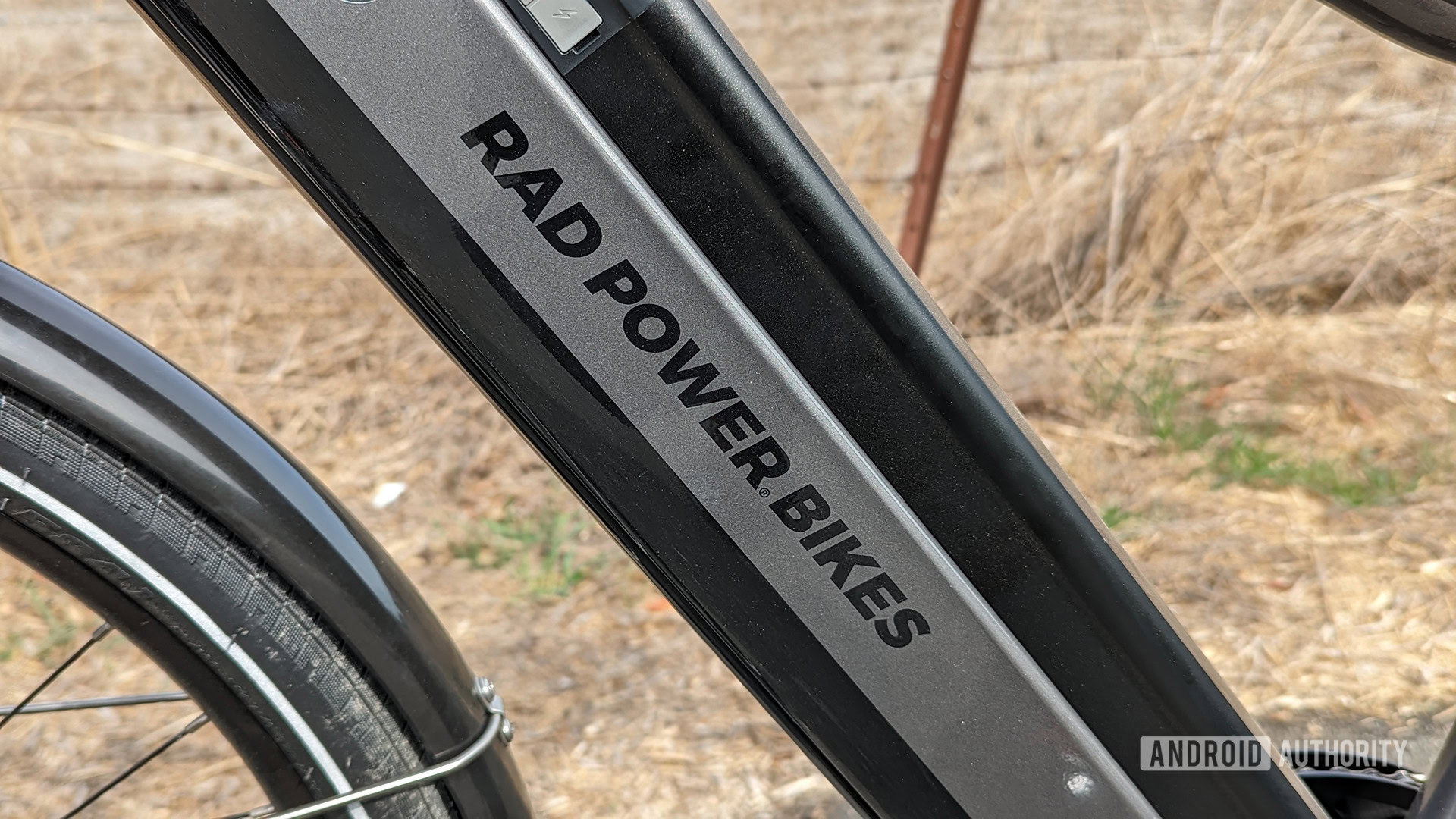
If you want to buy an e-bike, battery life is probably the biggest question on your mind. Unfortunately, there is no straightforward answer. As with any other battery-operated product — be it a smartphone, laptop, camera, or whatever — how long it lasts on a charge will come down to your usage habits.
As one would expect, riders who rely on the power-on-demand throttle for most of their riding will see very poor battery life, while those who mainly leave the PAS on “1” will see terrific longevity. On top of this, the type of terrain can have a huge influence: If everything is flat, the motor won’t need to work as hard as it would if you’re riding up hills constantly.
As with most battery-powered devices, your e-bike's battery life will depend on how you use it.
As I mentioned earlier, I’m quite conservative with my battery usage. I tend to pedal constantly while riding, leave the PAS as low as possible, and only use the throttle to buzz through intersections. With the Rad Power Rad City 5 Plus, I was able to ride 58 miles in this fashion before running out of power. I’m sure I could extend that by a few more miles if I was even more conservative.
However, I also tested the Rad City 5 Plus on the opposite extreme. I charged the battery all the way up and then went for a ride using nothing but the power-on-demand throttle. In that scenario, I was only able to ride 27 miles before running out of juice.
With the Rad City 5 Plus, you will get somewhere between 27 and 58 miles of riding with one charge.
Charging can be done one of two ways. You can charge the battery while it’s still locked to the e-bike by connecting a proprietary cable to a covered port on the side of the battery. Conversely, you can remove the battery and connect it to a provided cradle. This is helpful if you want to park the e-bike outside your place of work, for example, but still be able to charge up for your ride home.
Removing the battery requires a key. The keyhole is on the frame of the bike itself. I’m sure this lock could be picked by a professional, but I tried to figure out a way to get the battery out without a key and couldn’t do it. It’s very secure from what I’ve seen.
Since the battery is massive (and heavy), it takes a long time to charge. It requires a full eight hours to fill up from zero, so you should keep this in mind if you plan on using this for very long commutes. However, if you can get to your destination and back on one charge, you can leave the battery on the charger at night and wake up to a full cell.
Finally, you can buy an extra battery to double your potential mileage. However, the extra battery for the Rad City 5 Plus is a whopping $600 and weighs nearly eight pounds, so it’s not incredibly convenient. Still, it is an option if this would suit your needs.
Maintaining an e-bike
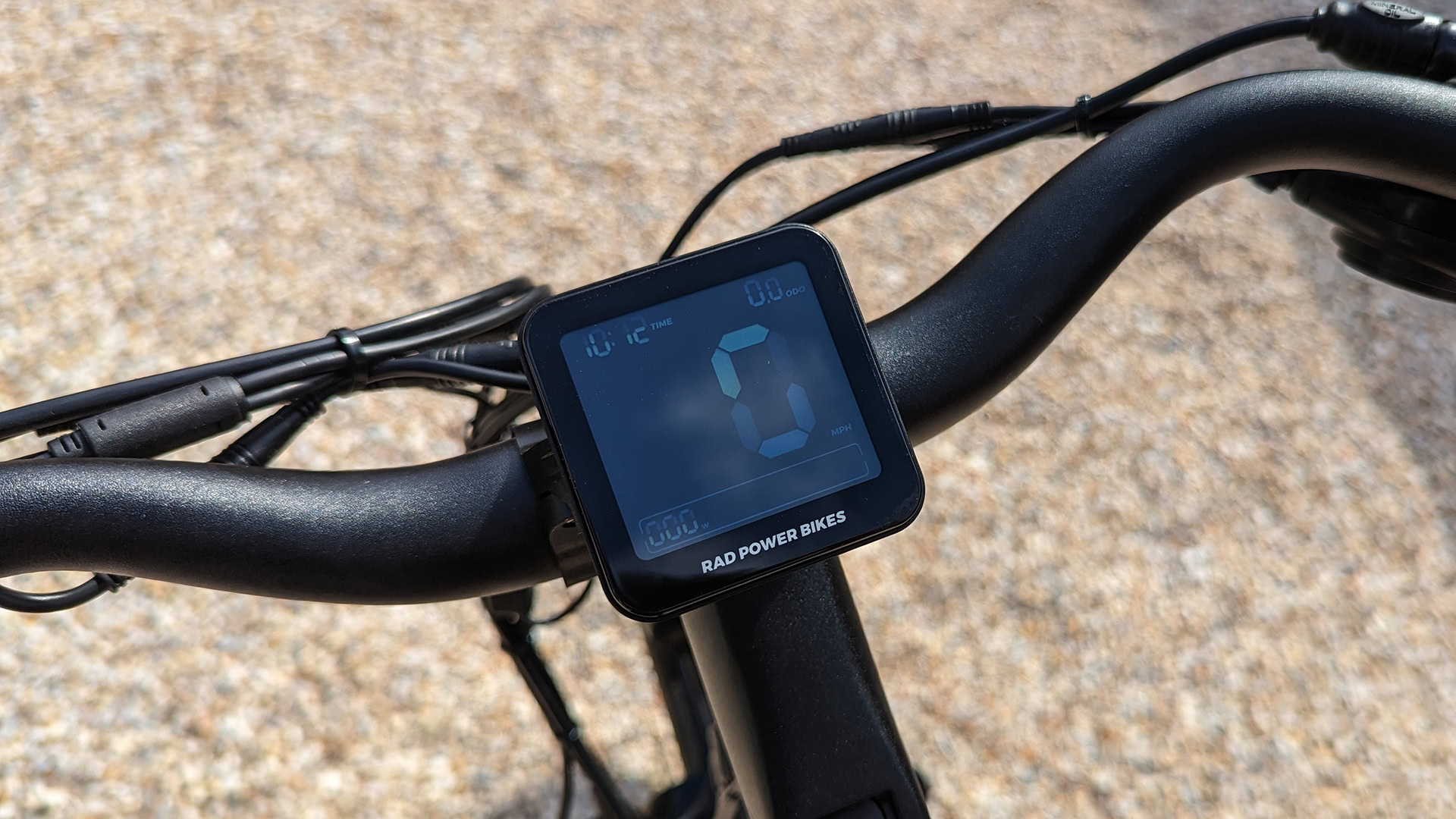
I mentioned it earlier, but I used to use a fixed-gear bicycle as my primary mode of transportation. Fixies are the perfect beater bikes — they are easy to maintain, cheap to fix, and could last you forever if you take care of them.
An e-bike, no matter how cheap you go, is not a beater. There are so many additional parts here that need care and attention. The battery is one of them, as it’s just like any other battery: you need to mind its charging patterns and keep it away from very high/low temperatures. Failure to baby your battery could result in frequent replacements, so this is incredibly important.
E-bikes are more complicated than regular bikes, so it shouldn't be surprising to find out they are more difficult and more expensive to maintain.
There are also so many cables on an e-bike like the Rad City 5 Plus. The battery doesn’t just supply power to the motor but also to the two controllers on the handlebars and the front light. This creates a cable chain that goes all the way up and down the bike’s frame. If one of these cables fails, it could be a troubleshooting nightmare to figure out which one went wrong and then replace it.
The motor itself also makes repairing everything at the rear of the bike more difficult. On a fixie, the rear tire pops off with ease and all you need to do is make sure you don’t lose the chain. A road bike with the standard 10-gear system is more complicated, but still pretty straightforward for most enthusiasts. An e-bike system is going to be even more complicated than that.
Thankfully, the 'normal' parts of an e-bike are usually the same as any other bike, so it's not all foreign territory.
This all means that taking care of your e-bike — and bringing it in for a yearly tune-up religiously — is going to be much more important than a traditional bicycle. Considering you’re likely going to invest more money into an e-bike than you would a regular one, you need to be ready to treat it with some serious TLC.
Thankfully, the “normal” parts of the Rad Power bikes are the same as what you would get from any bike shop. This means you can replace tubes, tires, brakes, etc. just as you would — and with the same hardware — as a normal bike. It will just be more complicated to perform that repair.
For buyers who are nervous about all this, don’t worry: Bike shops are getting much better about supporting e-bike repairs. Obviously, in the case of Rad Power, going to a showroom would be the best idea, but most reputable local bike shops should be able to help you if you’re willing to pay for it.
A cyclist’s e-bike experience: Not a bike replacement
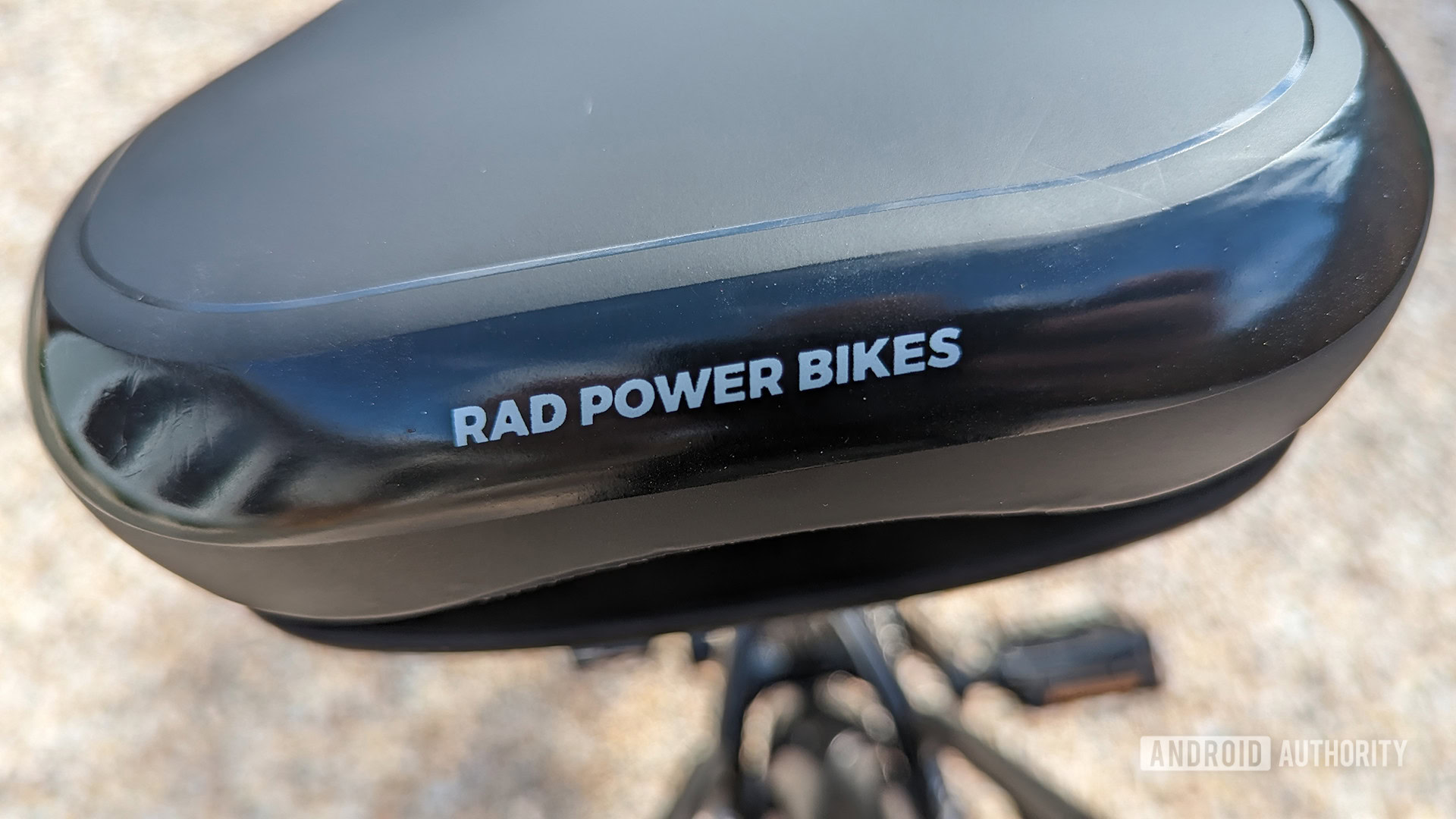
There’s a certain thrill to riding a bike. Being on the open road with nothing but your feet to get you to your destination doesn’t have too many parallels. Likewise, choosing, tweaking, and maintaining your bike can be its own kind of thrill for cycling fanatics.
Riding an e-bike has a certain thrill as well. However, it is not the same as riding a non-electric bike. For me, my first few rides on an e-bike were similar to my first few experiences driving an EV (or even a regular car). I’m specifically referencing getting used to being behind the wheel (or, in this case, handlebars), feeling out how speeding up and slowing down work, and understanding the core information you’ll need about getting from point A to point B. The e-bike felt like a slimmed-down version of a car, not a souped-up version of a bike.
Time and time again, while riding an e-bike, I thought about it as a trimmed-down car, not a souped-up bike.
This is why, fundamentally, I think buyers should think about an e-bike like the Rad Power Rad City 5 Plus as a car replacement and not a bike replacement. For me, riding the e-bike didn’t satiate my desire to ride a regular bike. In fact, if anything, it only made me want to get on my old fixie more.
Pedaling the e-bike, for example, didn’t feel as good as pedaling a regular bike. I don’t know how to explain it, but I felt less connected to it — like what I was doing had less effect on the e-bike than it would a normal bike. I didn’t feel as in control of the overall experience, even if I did feel more in control of my safety on the road. The e-bike looks like a bike but doesn’t ride like one.
Get an e-bike to replace your car, or at least use it less.
However, as someone who lives in a single-car home, the e-bike is now an essential aspect of my daily life. It is far easier to run some errands on the e-bike than it would be on a regular bike and it’s far more environmentally friendly — and wallet-friendly — to leave the car at home. I can imagine it as a terrific car replacement for commuters, especially those who live in a big city where parking a car can be a huge hassle, both logistically and financially.
In other words, if you’re big on cycling and are thinking an e-bike could replace your regular bike, that’s not likely to be the case. It is far more likely that you’ll have an e-bike as a new addition to your larger bike collection. It will exist comfortably next to your beater fixie/cruiser, your very expensive distance bike, your equally as expensive mountain bike, and on and on.
Should you buy an e-bike? Probably yes.
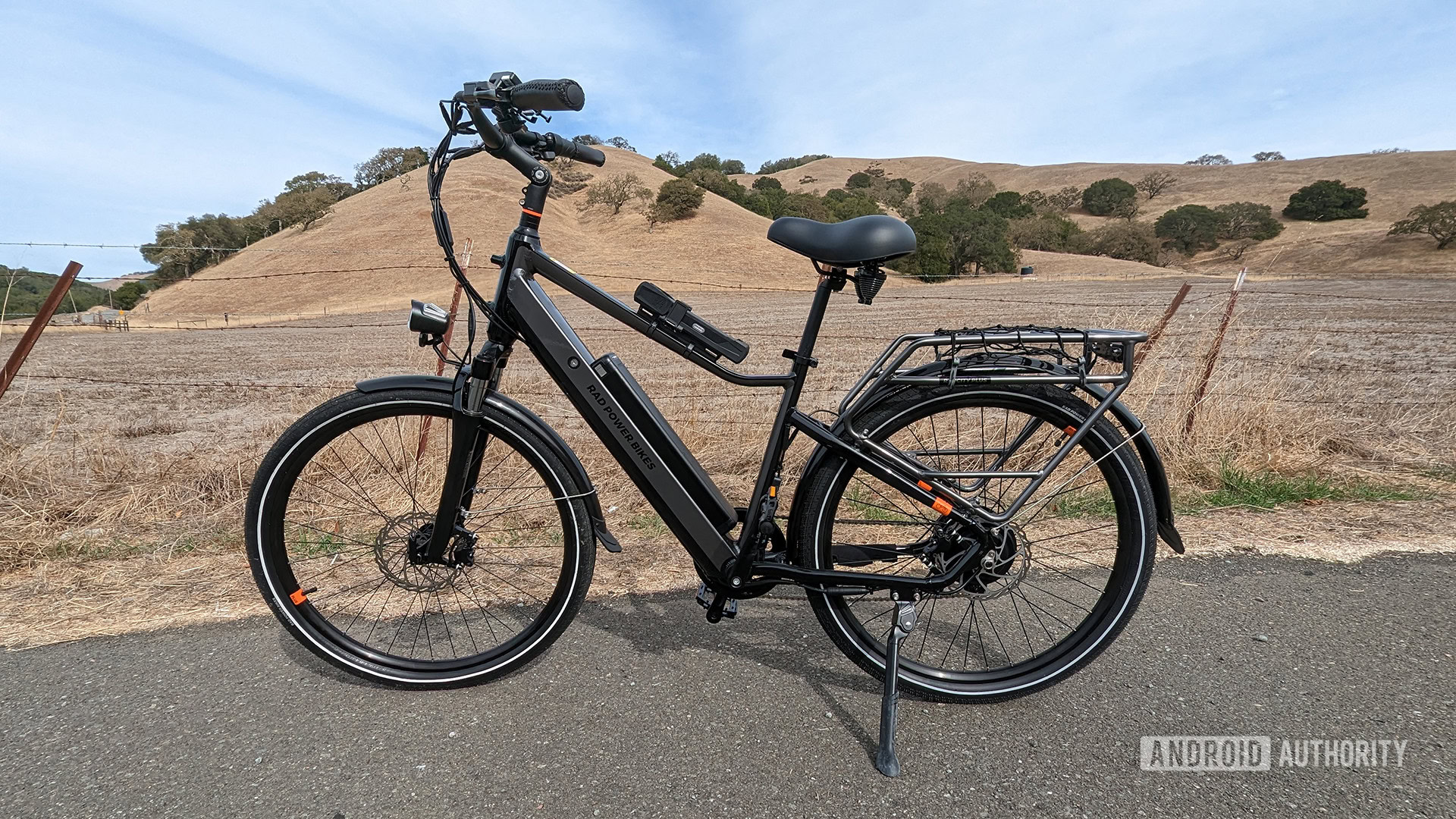
As I mentioned at the beginning of this article, the e-bike industry is still up-and-coming in the United States. Folks who didn’t even think about it a few years ago might want to buy an e-bike over the next few years. But should they?
In my opinion, there are very few people out there who shouldn’t at least think about buying an e-bike. If you drive a car, it’s nearly certain that at least some of those car rides could happen on an e-bike instead. You’ll get to your destination a little slower and you won’t be able to carry as much cargo, but you’ll save on gas money and vehicle wear and tear, get some exercise, and help out the environment, which are all great things.
If you use a car to get around, at least some of those car rides could be e-bike rides instead.
Those who don’t already own a car have even more incentive to look at an e-bike. It’s far easier to use an e-bike to get around and probably safer, too, if the e-bike has a throttle. It will give you more control over your schedule and will probably pay for itself in only a year or two if you use public transportation less.
Finally, even avid cyclists should look at an e-bike. As I said in the previous section, an e-bike isn’t likely to replace any of your current bikes, but it will be a good addition to your fleet that you’ll likely use often.
Most people reading this should at least look at owning an e-bike. Just don't think it will replace your regular bike.
The only people who shouldn’t bother with an e-bike, in my opinion, are those who can’t ride one for health/mobility reasons or who live in an area in which riding one would be logistically difficult — such as a place that is very cold throughout the whole year. This would be a small subset of the population, though. In reality, most people reading this would likely benefit from an e-bike.
Also, just because I went with the Rad City 5 Plus ($1,699) doesn’t mean that’s your only option. The Lectric XP 3.0 ($1,099) is a great choice for entry-level buyers and can easily be found for less than its list price during sales. The Aventon Level 2 ($1,949) is a great choice if you’ve got plenty of money to spend. It’s also possible to retrofit your current bike to make it electric using something like the Ebikeling Kit ($419).
Just don’t be like me and approach an e-bike as a new kind of bicycle. It’s a new mode of transportation — and a very useful one — but if you buy one looking for a cycling experience, you won’t find it. That’s something you can only get from your feet, a traditional bike, and the wind on your face.
